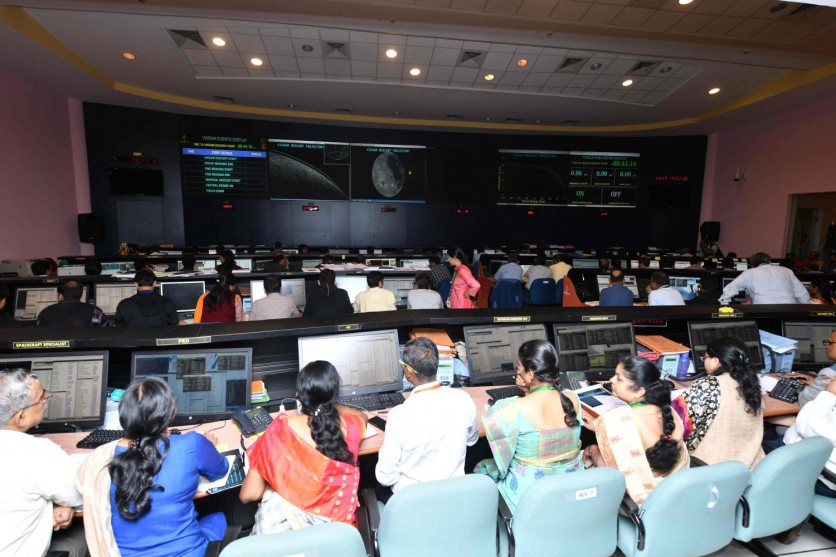
Months after India's first attempt at land a rover on the surface of the moon have passed, we finally have more information as to what happened to the Chandrayaan-2 Vikram lander.
A question lodged at the Indian Prime Minister last Wednesday, Nov. 20, revealed that the Vikram lander "hard landed" on the surface of the moon. Jitendra Singh, minister of state for the Department of Space, said the following on the matter:
"The first phase of descent was performed nominally from an altitude of 30 km to 7.4 km above the moon surface. The velocity was reduced from 1683 m/s to 146 m/s. During the second phase of descent, the reduction in velocity was more than the designed value. Due to this deviation, the initial conditions at the start of the fine braking phase were beyond the designed parameters. As a result, Vikram hard landed within 500 m of the designated landing site."
Minister Singh did not elaborate on what exactly was the cause of the crash. This is the government's first response on the matter after ISRO, the Indian Space Research Organizations, updated the public with a statement on their website last Sept. 10. Late last month, NASA announced that they themselves had not found the lander. Their Lunar Reconnaissance Orbiter scanned the expected land site of the Vikram lander. However, it was unable to spot it.
India Still Sees The Project as a "Success"
However, all is not lost with the Chandrayaan-2 project. The space project, which cost the developing country $135 million, was still deemed as a success. According to Minister Singh, the orbiter has been able to give them significant data and the mission life of the orbiter has been extended:
"Most of the components of Technology demonstration, including the launch, orbital critical maneuvers, lander separation, de-boost and rough braking phase were successfully accomplished. With regards to the scientific objectives, all the 8 state of the art scientific instruments of the Orbiter are performing as per the design and providing valuable scientific data.
Due to the precise launch and orbital maneuvers, the mission life of the Orbiter is increased to 7 years. The data received from the Orbiter is being provided continuously to the scientific community. The same was recently reviewed in an all India user meet organized at New Delhi."
More Launches in the Future
In a follow-up question this week, Minister Singh announced that the government has plans to launch the third in the Chandrayaan series of space missions. Chandrayaan-III, as it is currently known, is projected to launch by November 2020. The new project will attempt to land a new rover and lander, as the orbiter from Chandrayaan-II is still in orbit around the moon.
India is not the only one to experience setbacks in their space program recently. Earlier this year, a private project funded by Israel also failed to land a rover on the moon. The Beresheet, as it is known, lost its main engine during the final minutes of its landing. However, they have also announced that they will be attempting to land a similar craft in the near future.
SEE ALSO: ISRO's Record 104 Satellites On Single Rocket Successfully Launched From India
ⓒ 2026 TECHTIMES.com All rights reserved. Do not reproduce without permission.




